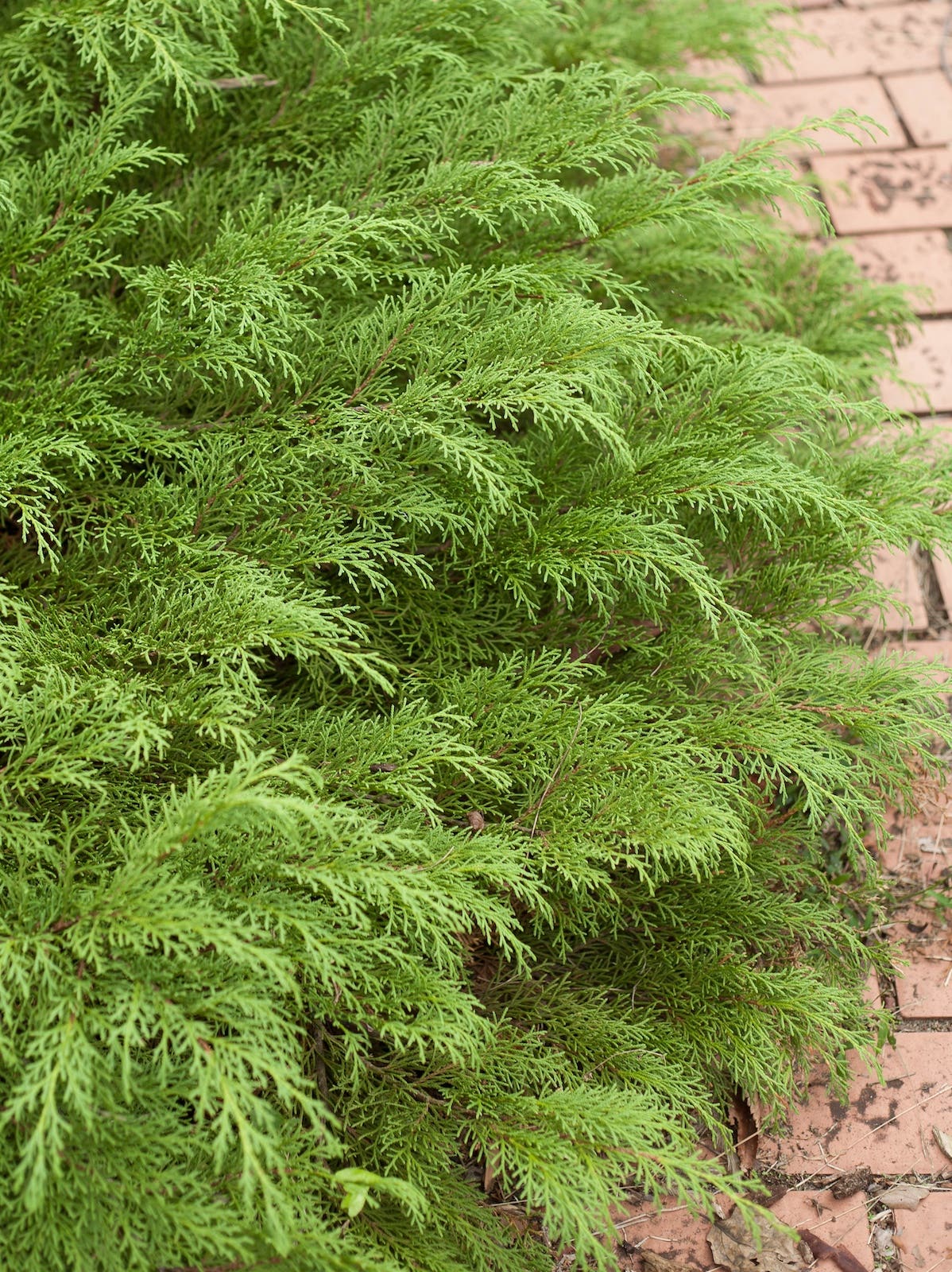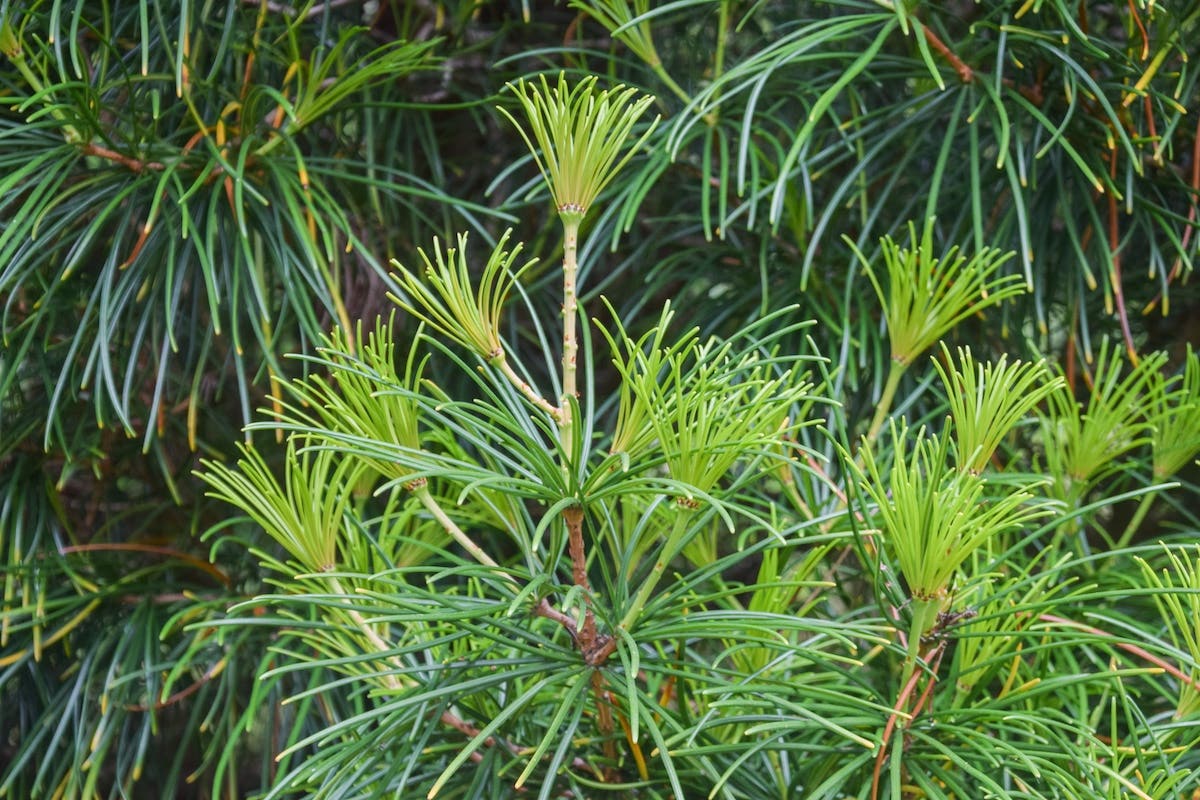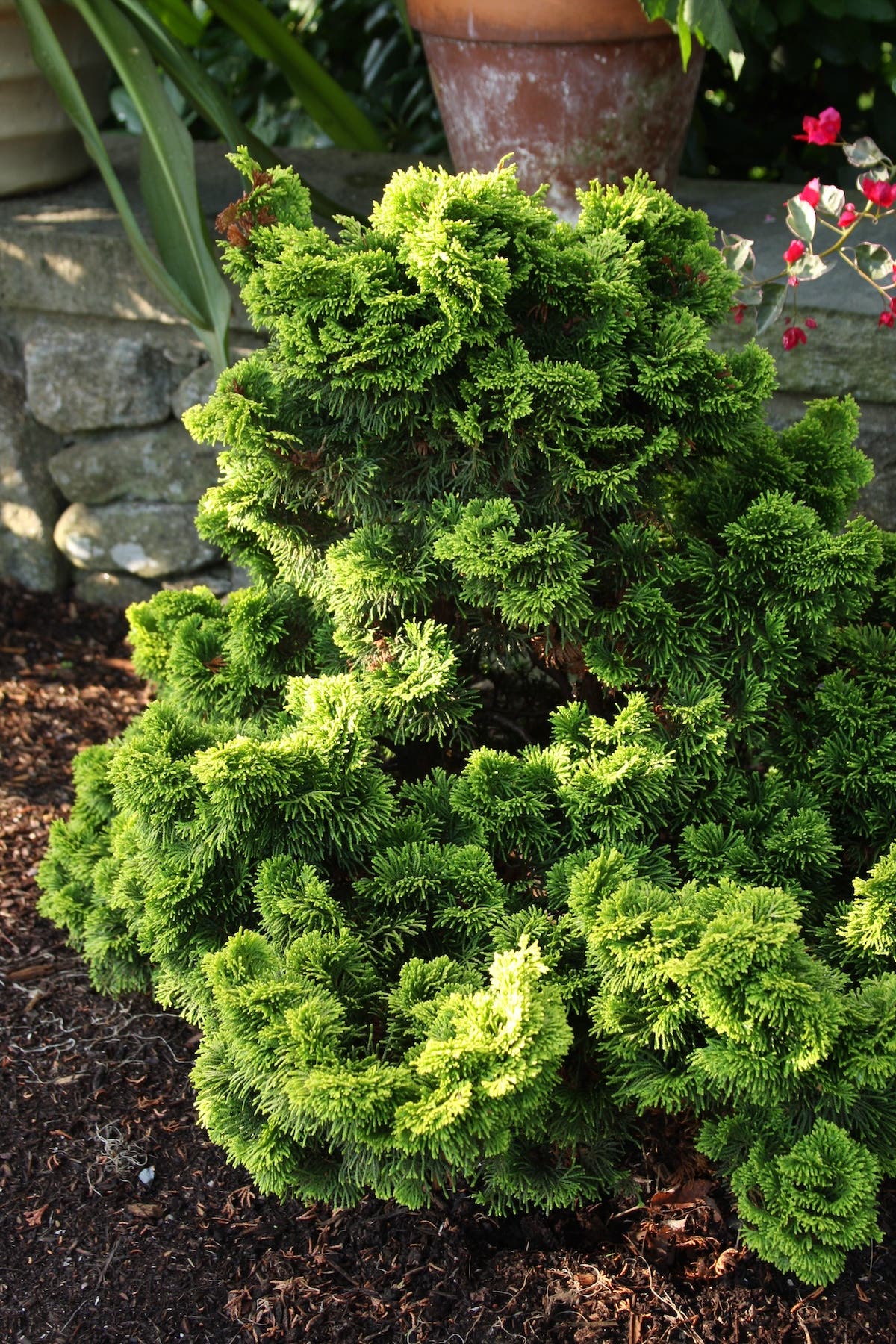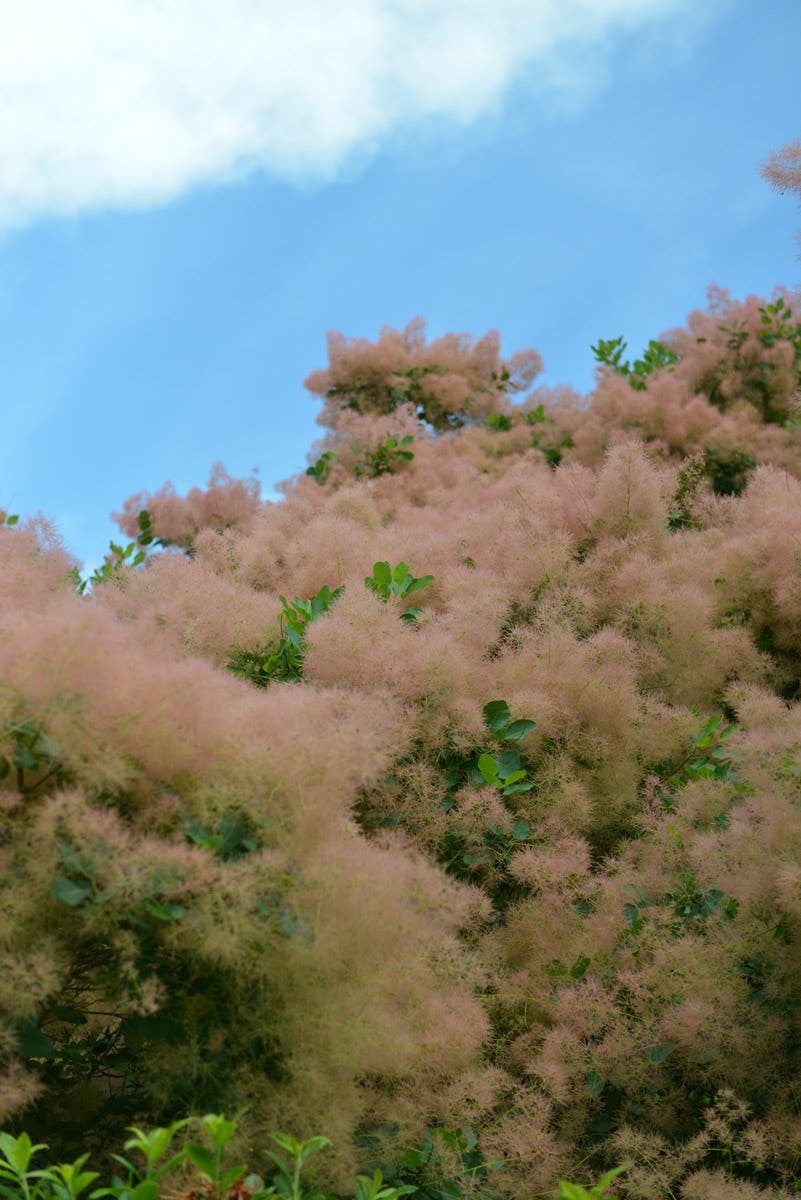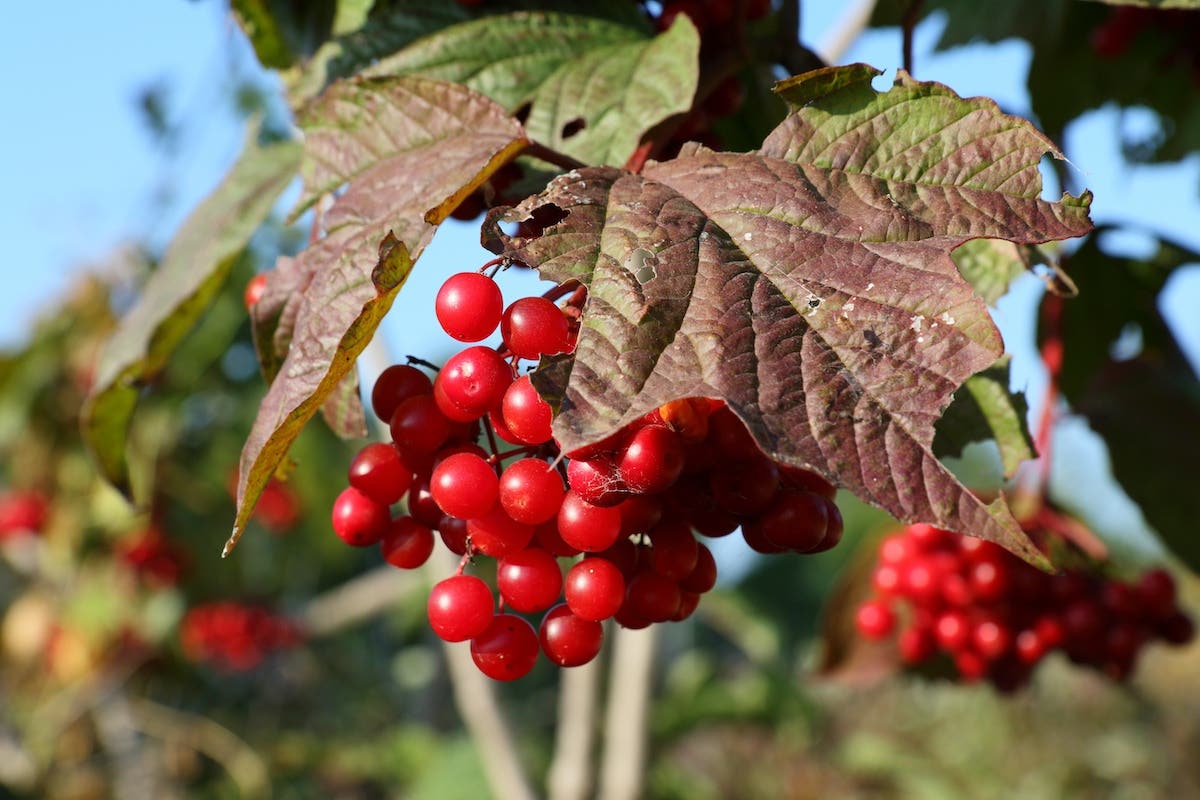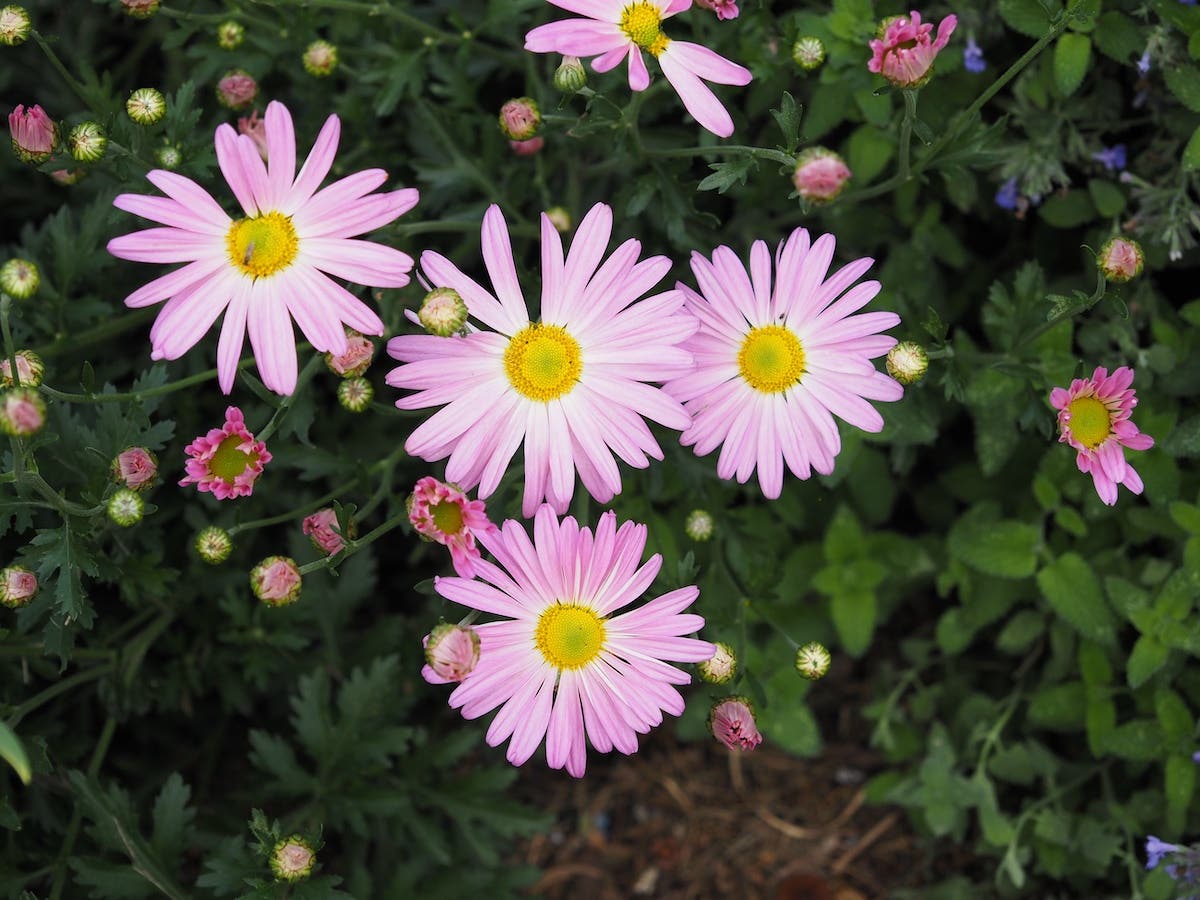Shade gardens can shine from spring to fall, often thanks to early-flowering ephemerals and a mix of foliage textures that provide summer interest. However, some perennials that relish low light conditions also provide July or August bloom. These plants make the perfect foil to companions whose summer beauty lies in their leaves, like hostas, ferns, heucheras, Solomon’s seals, sedges and more.
White Wood Aster
Eurybia divaricatus, syn. Aster divaricatus
Asters are mainstay perennials for their autumn bloom. This species is the earliest of them to begin flowering, with blossoms appearing from late summer into fall. The daisy-type flowers are small, with slender white rays emanating from a golden eye that darkens to deep pink over time. The flowers and heart-shaped leaves are carried on skinny, near-black stems that can weave through companions. This aster attracts pollinators as well as birds that eat its seed in fall and winter.
Exposure: Part shade, full shade
Habit: Mounding to 2 to 3 feet tall, 2 to 4 feet wide
Growing notes: Eurybia divaricatus is a North American plant native to woodlands from Georgia and Alabama north into Canada. Site it in part or full shade and dry or moderately moist soil. It can spread by rhizomes and by seed, sometimes aggressively, but this makes it a good candidate for a weed-suppressing groundcover. Both the species and its compact cultivar ‘Eastern Star’ showed excellent mildew resistance in a Chicago Botanic Garden aster trial. USDA Zones 3–8.
Martagon lily
Lilium martagon
This late-summer lily can take full sun, but it also blooms well in part shade, with the main difference in each location being the length of the flowering stems. More shade will prompt longer stems. Also known as Turk’s cap lily, the nodding flowers bear strongly recurved petals and draw in butterflies and hummingbirds. Cultivars can be found in white and all shades of yellow, orange and red.
Exposure: Full sun to part shade, dappled shade
Habit: Upright, 3 to 6 feet tall, 1 to 3 feet wide
Growing notes: Have patience with martagon lily, which take some time to get established and bloom. Site them where they will receive at least a couple of hours of sun each day, preferably in the morning. This lily prefers regular moisture and light, rich soil that drains well. Zones 3–8.
‘Bottle Rocket’ Leopard Plant
Ligularia ‘Bottle Rocket’
Leopard plants, or ligularias, are shade-loving, large-leaved perennials mostly native to Asia. The cultivar ‘Bottle Rocket’ stands out as a compact version handsome in both foliage and flower. Its broad, maple-like, toothed leaves are dark green and dense. Dark gold, bee-loving flowers appear just above the foliage at midsummer, lining deep brown stems.
Exposure: Part shade, full shade
Habit: Upright to 2 to 3 feet tall and 2 feet wide
Growing notes: Ligularia does not tolerate dry soil, and high temperatures can cause it to wilt regardless of soil moisture, especially if the plant receives some sun. Compared to other cultivars, though, ‘Bottle Rocket’ holds up better. If ligularia does wilt, the foliage will likely regain turgidity in the evening; if not, water deeply. Zones 4–9.
Black Cohosh
Actaea racemosa, syn. Actaea cimicifuga, Cimicifuga racemosa
This North American East Coast–native plant supplies fine-textured compound foliage beginning in spring, then erupts with tall wands of white flowers from mid- to late summer. It reaches shrublike heights over the course of the growing season while maintaining a narrow footprint, making it a nice counterpoint to low, wide denizens of shade. This is a host plant for several species of butterfly.
Exposure: Part shade, dappled shade
Habit: Upright to 5 to 7 feet tall and 2 feet wide
Growing notes: In deep shade, black cohosh may stretch for light, so site it where it will receive some sun each day, be it direct morning light or an all-day dappling. Purple-foliaged cultivars exist of North American A. racemosa (and also its Asian cousin, A. simplex). However, these require more sun (with increased water to go with it) for their deepest color. The green-leaved straight species offers the same texture, summer bloom and verticality without these demands. Zones 3–8.
Featherleaf Rodgersia
Rodgersia pinnata
This large perennial’s compound leaves provide shade-garden texture and even some contrast in spring, when they tend to emerge with purple-bronze cast. Around midsummer, leatherleaf rodgersia sends up astilbe-like panicles of white flowers. Named cultivars offer the most dramatic and longer-lasting foliage color, and flowers of cream, pink or red.
Exposure: Part, dappled or full shade
Habit: Clumping to 3 to 4 feet tall and wide
Growing notes: Rodgersias prefer at least some shade during the day, along with rich soil and even moisture. They can be grown in full sun, but they will require more water there to avoid brown leaf edges. Zones 5–8.
Image credits: White wood aster by manuel m. v./CC BY 2.0; Martagon lily by xulescu_g/CC BY-SA 2.0; 'Bottle Rocket' leopard plant courtesy Walters Gardens; Black cohosh by cultivar413/CC BY 2.0; Featherleaf rodgersia by Leonora (Ellie) Enking/CC BY-SA 2.0


